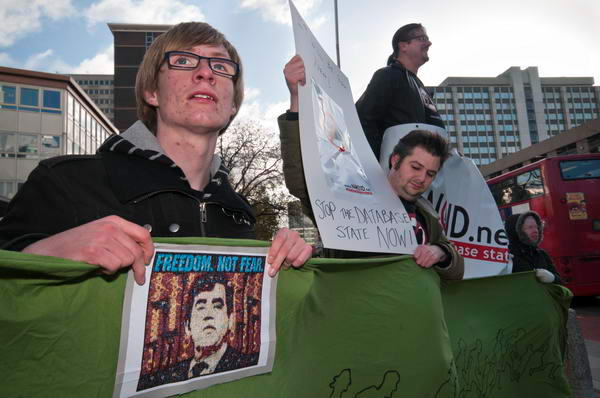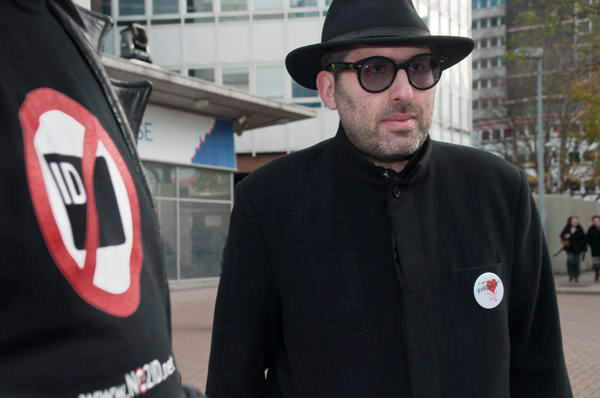Christopher Morris‘s video sequence The Dear Leader seems largely to show what a good still photographer he is. The video itself is far too long and its soundtrack filled with rather too much portentous music (Emily by Philip Glass from the score for the film The Thin Blue Line and Evil Grade by John Kusiak, used in the film The Fog of War: Eleven Lessons of Robert S. McNamara, which also had a soundtrack largely by Glass.)
Essentially the movie seems a series of stills, to some of which the movement of the characters involved occasionally adds something, particularly in a lengthy shot of Bush speaking where what I assume are security men twitching in the right foreground supply the main interest. At other times it merely distracts, and there are also some downright boring long and fairly empty scenes where I longed for a single frame or even a more active pair of scissors.
I couldn’t help thinking what a shame he didn’t have his eye to the viewfinder of a still camera during some of these sequences, still frames as yet can’t have the same quality (but of course it may not be long, esepcially with RED), but there are images that flicker through here that are stronger than some of those in his George Bush retrospective on VII, which does also contain a number of superb pictures.
You can see more of his feature stories ther by clicking on his name at the left of the features page – unfortunately there doesn’t seem to be a direct link.
Among many other articles worth reading in dispatches is a letter from John Morris written on the occasion of Cornell Capa‘s death in May 2008, but also recounting something of the tragic loss of both Werner Bischof and Robert Capa in May 1954.
I found the video on ‘dispatches‘ from a link at FOTO8 and again on VII you can also see the pictures from Morris’s show My America which was at the Host Gallery recently. Currently they are showing the work of British post-war industrial photographer Maurice Broomfield, a reminder of those times when Britain still had industry.









